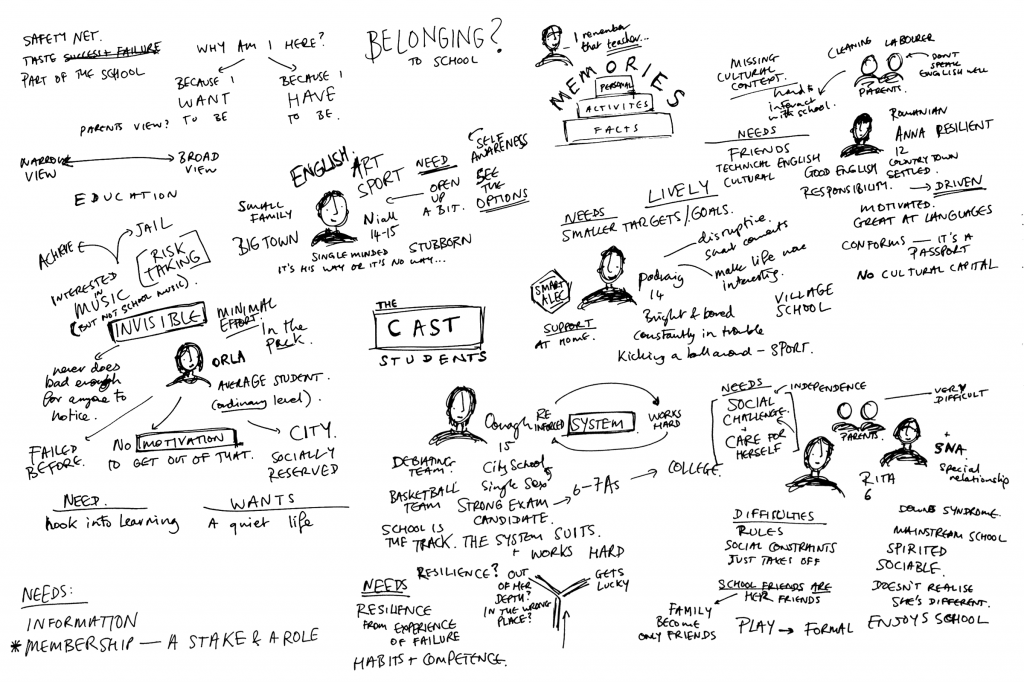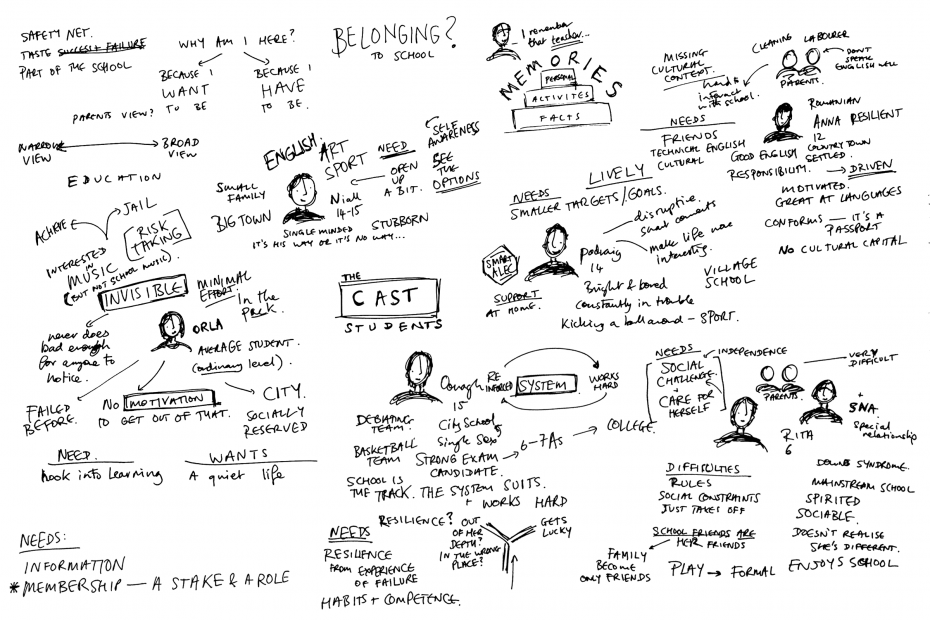Too often we do things to our users and people our organisations exist to serve. Instead, we should be doing things with them or on their behalf. One way of ensuring that this is the case is to try, as much as is possible to ‘step into the shoes’ of each kind of user or participant, and think about things from their point of view.
What we’re actually doing with this activity are very basic personas, which your team/ organisation can develop over time:
“A persona, (also user persona, customer persona, buyer persona) in user-centered design and marketing is a fictional character created to represent a user type that might use a site, brand, or product in a similar way…The term persona is used widely in online and technology applications as well as in advertising, where other terms such as pen portraits may also be used.”
Wikipedia
Target group: project team, management board
Time: 20 – 50 minutes
Material: Paper for notes and sketches
optional: Whimsical Template
Goals: define your target group to develop your service or product specifically for them
The great thing about defining the cast is that it opens up a conversation about the kind of people your product or service is actually for. How much do we know about them? What are they like? Do we need to do further research?

Spend 5-10 minutes on each persona and do between three and five to ensure you have a decent overview. Ask:
- Who are they? What’s their name? How old are they? How do they identify (gender, etc.)
- Where do they live? Who do they live with?
- When and where do they interact with your product or service? For what reasons?
- What do they want? What do they need?
The last of these bullet points is important. To help you a bit more with this, we usually think about the difference between a ‘want’ and a ‘need’ as being like this. The person themselves would be able to articulate / talk about what they want, but they might not realise what they need. For example, look at ‘Orla’ to the left of the image above. She says that she ‘wants’ a quiet life, but what she actually ‘needs’ is a hook into learning.
It’s worth pointing out that this is only a very preliminary stage into a whole raft of user research that you should do when developing products and services. Personas are always provisional, and should be revisited often.
Read this post by We Are Open collaborator Hannah Belshaw for more details on why and how to do that!

